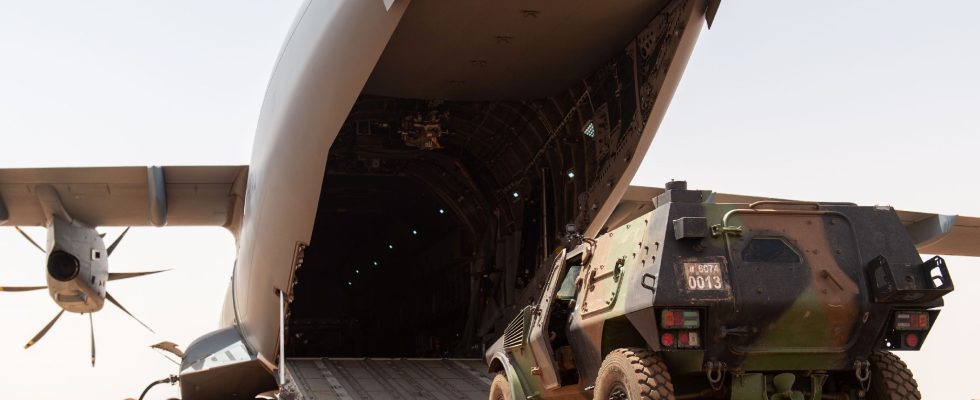Barely three months. This is the time the French army has to pack up in Niger. Emmanuel Macron has thus set the course for the end of the year to put an end to this presence, after weeks of tensions with the putschists behind the overthrow of President Mohamed Bazoum at the end of July. For the 1,500 soldiers deployed there, it is not just a matter of packing their bags and taking the plane: their weapons, their vehicles and equipment of all kinds – kitchens, toilets, dormitories, etc. – must follow them.
“It’s a huge logistical challenge, which had already proven complicated in Mali,” recalls Elie Tenenbaum. Nearly a year had been necessary to evacuate the bases of Kidal, Tessalit, Timbuktu, Gossi and Ménaka, before that of Gao, the largest, the equivalent of a small town, which alone represented more than 3,000 containers to move. He had to 8 weeks to dismantle the food storage platformwith a surface area of 1,155 m², corresponding to 20 containers alone.
If the deadline looks shorter, the situation is different in this new case. While they had their own bases in Mali, French soldiers were installed in three officially Nigerien camps, one of the reasons why the junta called for an agreement with Paris on a “negotiated framework” for the French withdrawal. . The two smallest camps are located in Ouallam and Tabarey, in the North-West. They should be left first by French forces, heading towards the capital.
Risks of demonstrations
In Niamey, it will be a different story. In the perimeter allocated to the French in Nigerien base 101, near the airport, there are hundreds of prefabs and hangars, and numerous vehicles, planes, drones and all logistical support. The most sensitive material likely to fit on planes could be taken out by air – some of it could reach the French base in N’Djamena, Chad. In Mali, French forces used their A330 MRTTs and their A400Ms, but also called on Ukrainian Antonovs and military transports allocated by its allies, particularly Americans.
The majority of vehicles and containers are expected to leave the country by land. Dozens of convoys of equipment could travel to the Gulf of Guinea to then take the boat, before returning to France or joining other deployments abroad. “It should rather be through Benin, because the passage through Burkina Faso [pour rejoindre la Côte d’Ivoire] seems difficult, given the tensions with France, underlines Elie Tenenbaum. And then, there is the risk that the convoys could be the subject of demonstrations of obstruction.”
The French know something about this. Two years ago, one of their convoys traveling between Abidjan, in Ivory Coast, and Gao, was attacked with stones and sticks by demonstrators in Téra, in western Niger. Without really knowing who the perpetrators of the shots were – French soldiers or Nigerien forces responsible for accompanying them – three people were killed by gunfire. Added to this security risk is another: that of an attack by jihadist groups. For the French army, the puzzle has only just begun.
